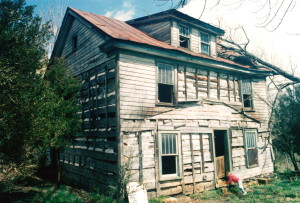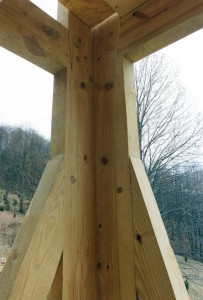A chimney base
Noah Bradley2019-06-29T10:30:12+00:00Here’s a photo of the angle-cut course of stone made in order to create a wider base for the stone chimney that is to come. It’s a really nice touch to add to any chimney.
I’ve never read why the masons of old added this feature on the finer chimneys of that era, but I would imagine it was a way to further strengthen and stabilize these monuments.. and that is what a well-built chimney is, a monument. A chimney often stands long after a home is gone.
Folks back then paid more attention to nature than we do today and Incorporated those observations into their homes. Take a look at the tallest living structures that you encounter on a daily basis… trees. Notice how they flare out at the base?
It’s little details like this that will bring joy to you and for the generations to come. This handcrafted detail is right down there near the ground and is something that catches your eye every time you walk by it. New visitors always comment about it and often go over to touch it.
But it’s not without cost, it takes effort for you to get it in your plans, it takes extra materials, but most of all it’s about extra labor, it takes a mason days and days, with a hammer and chisel in hand, to create it. There is nothing like breaking the budget on day one… but IT”S WORTH IT !
Originally posted 2015-02-06 17:15:07.










